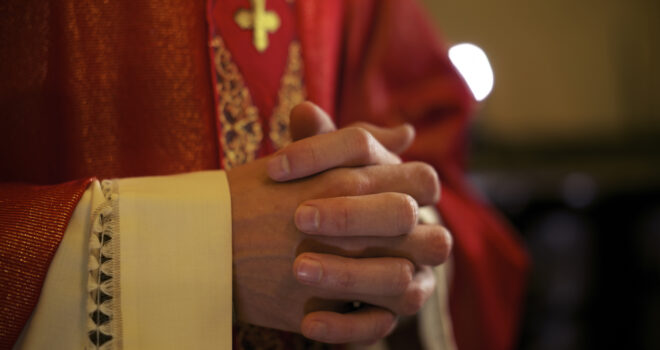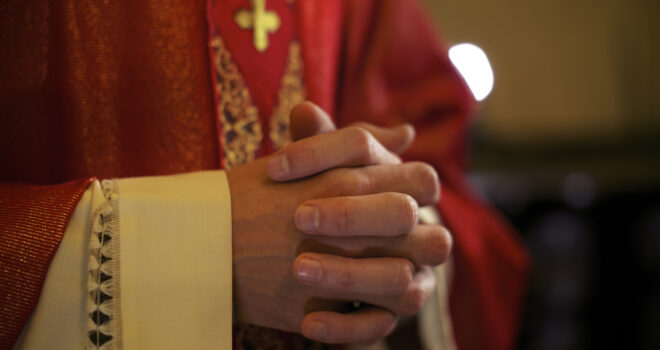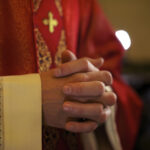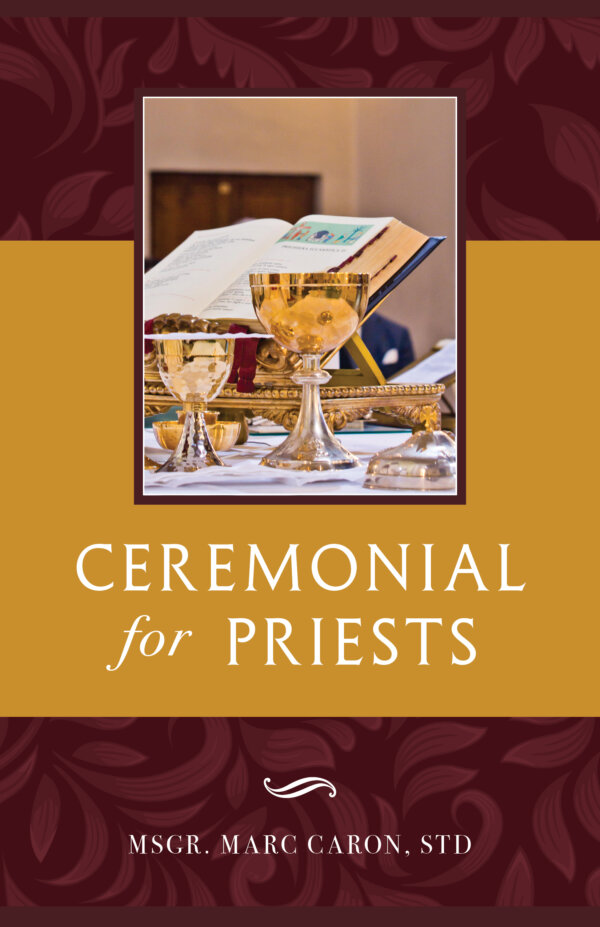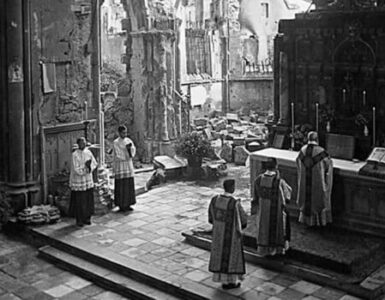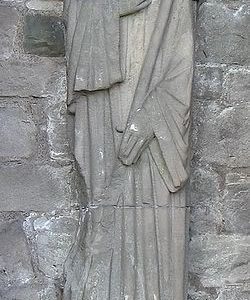Catholic Exchange sat down with Msgr. Marc Caron of the Diocese of Portland, Maine to discuss his new book, Ceremonial for Priests. The interview is reproduced below:
What inspired you to write this book?
I spent four years at St. John’s Seminary in Brighton, Massachusetts teaching seminarians how to celebrate Mass and the sacraments. While the liturgical books themselves might tell a priest or deacon what to do at a given point, they never really describe how to do something. For example, those preparing to be ordained deacons would often ask me, “What am I supposed to do with my hands while I am reading the Gospel?” The answer is simple, “You do what deacons have always done when reading the Gospel. You join your hands.” But those kinds of directions often don’t appear in the liturgical books. They are presumed. My book is an attempt to describe the postures and gestures of the priest and deacon at Mass which are presumed but not specified by the liturgical books.
Is the book meant only for priests and deacons?
No, I think it has a somewhat broader audience. Obviously, I think it can be helpful to seminarians and to those who teach seminarians, since that was my original intention in writing the book. I suspect that sacristans, those responsible for training altar servers, those who act as masters of ceremonies at large parish events, and so forth would also be interested in it. In some ways, it might also be helpful, along with the official Ceremonial for Bishops, to those who plan diocesan events and function as masters of ceremonies on those occasions too.
What do you hope priests, deacons, and seminarians will take away from your book?
My book is a manual designed to help priests and deacons develop the “art” of celebrating the Church’s liturgy. Liturgy is both an art and a craft. It is a craft to the extent that those responsible for the liturgy need to be knowledgeable about what to do. They need to understand what they doing and why they are doing it. But there is also an art to celebrating the Church’s liturgy. That means knowing how to conduct onself with a certain grace and decorum. That means that one doesn’t need to think about the postures and gestures of the Mass because they have become second nature over time. Liturgy needs a certain stability and predictability to it in order for it to be effective. You can’t have stability in the liturgy if you are figuring out how to do something everytime you are faced with the same circumstances.
Why should there be such attention paid to the postures and gestures of Mass?
The liturgy speaks to us through many different languages. There is the spoken and sung word. There is art, architecture and music which also send a message about what we are doing and its meaning. But there is also the language of the body. Our gestures also communicate something. People can tell if we are going through the motions or really praying. Our gestures can also communicate the wrong message. When we say, “The Lord be with you,” and never look at the people to whom we are speaking, we are sending the wrong message for example.
What can your book offer the laity?
The book is designed principally to help priests and deacons. Lay people will find their postures and gestures at Mass described in it too, but that isn’t the manual’s primary purpose. I do hope that the book will help parishes over time raise the level of their liturgical celebrations so that more and more of the laity are inspired by what they experience when they come to church. If the laity encounter something beautiful and uplifting when they come to church, they will certainly go away strengthened in their faith and changed by that experience.
If a pastor wanted to raise the level of the experience of Mass in his parish, where would he start?
That’s a tough question. There isn’t one answer to that question. It may sound strange, but I would encourage pastors to begin by clearing out all the clutter in their narthexes and in their sanctuaries! And then give the entire place a good cleaning! We don’t help ourselves when we give a bad first impression to those who come through our doors. More seriously, I think the priest should begin with himself. He needs to be prepared for Mass, to know what he is doing and how he is do it, and why he is doing it. He needs to have put all the time needed to prepare a decent homily that has a message that will touch his hearers. The pastor will need to take time with all the ministers of the Mass, singers, musicians, readers, deacons, servers, greeters, to make sure that they are doing the best job they can. After that, it is important over time to pay attention to the quality of all the objects used for liturgy to make sure they are noble and the best a parish can offer God. All this takes years to make an impact. There is no quick fix.
What part of your book do you think priests will find most helpful to them?
Holy Week is always a challenge for every priest. Every day of that week is different and you only do those ceremonies once a year. I think the section of the book on Holy Week in general and the section on Holy Week in small congregations in particular could be the most help to priests and those working with them to prepare those liturgies.
Why do you think this is a good time for your book to appear?
I am very pleased that Sophia Press is releasing this book during the period of Eucharistic Revival which the entire Church in the United States has undertaken. For myself, I don’t think there can be any kind of authentic and lasting Eucharistic revival among Catholics unless we take more seriously the celebration of Mass itself. By the manner in which we offer the sacrifice of the Mass day after day, week after week, can either build up faith or can weaken faith. When we act at Mass in a way that is distracted or sloppy, we give the subtle message that Mass really isn’t that important. When we fail to show by the way we act at Mass that we are adoring God first and foremost, then people can wonder whether we really believe what we profess. So, I think the book can make an important contribution to the national effort at a Eucharistic revival. Secondly, I am hoping it can motivate parishes to move beyond what I call the “COVID complacency.” During the period of the pandemic, we became accustomed to the bare minimum during Mass unfortunately. As along as Mass was celebrated and we could receive communion, that was a real blessing for us. But now that the pandemic emergency is behind us, it is time to return to a fuller expression of the Church’s worship. I am hoping that my book can help parishes jump start that fuller expression of worship once again. If it can help priests and parishioners accomplish that, I will be very pleased indeed.
Ceremonial for Priests is available from Sophia Institute Press.
Image by Diego Cervo on Shutterstock


